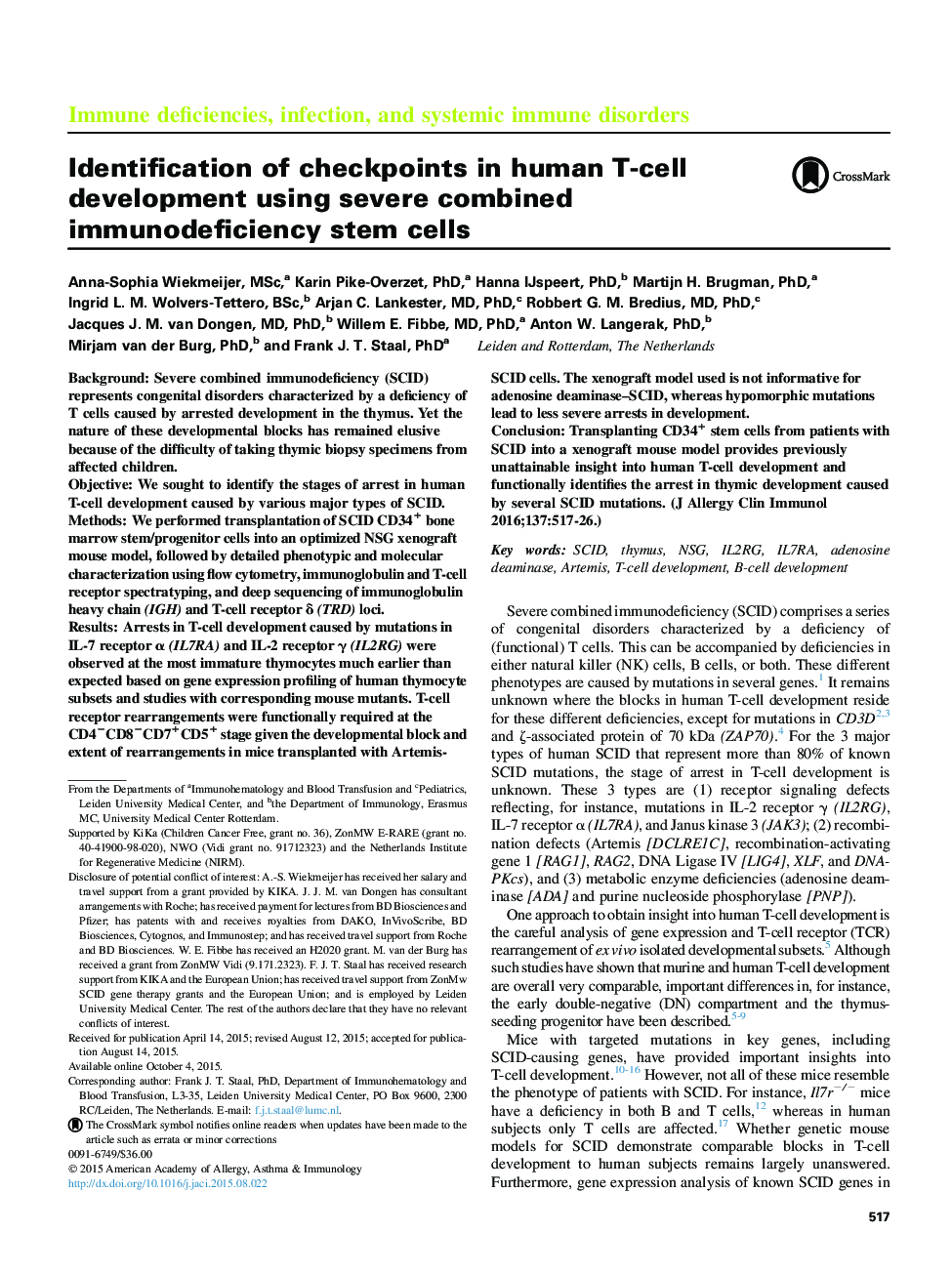| کد مقاله | کد نشریه | سال انتشار | مقاله انگلیسی | نسخه تمام متن |
|---|---|---|---|---|
| 6063634 | 1201853 | 2016 | 13 صفحه PDF | دانلود رایگان |

BackgroundSevere combined immunodeficiency (SCID) represents congenital disorders characterized by a deficiency of T cells caused by arrested development in the thymus. Yet the nature of these developmental blocks has remained elusive because of the difficulty of taking thymic biopsy specimens from affected children.ObjectiveWe sought to identify the stages of arrest in human T-cell development caused by various major types of SCID.MethodsWe performed transplantation of SCID CD34+ bone marrow stem/progenitor cells into an optimized NSG xenograft mouse model, followed by detailed phenotypic and molecular characterization using flow cytometry, immunoglobulin and T-cell receptor spectratyping, and deep sequencing of immunoglobulin heavy chain (IGH) and T-cell receptor δ (TRD) loci.ResultsArrests in T-cell development caused by mutations in IL-7 receptor α (IL7RA) and IL-2 receptor γ (IL2RG) were observed at the most immature thymocytes much earlier than expected based on gene expression profiling of human thymocyte subsets and studies with corresponding mouse mutants. T-cell receptor rearrangements were functionally required at the CD4âCD8âCD7+CD5+ stage given the developmental block and extent of rearrangements in mice transplanted with Artemis-SCID cells. The xenograft model used is not informative for adenosine deaminase-SCID, whereas hypomorphic mutations lead to less severe arrests in development.ConclusionTransplanting CD34+ stem cells from patients with SCID into a xenograft mouse model provides previously unattainable insight into human T-cell development and functionally identifies the arrest in thymic development caused by several SCID mutations.
Journal: Journal of Allergy and Clinical Immunology - Volume 137, Issue 2, February 2016, Pages 517-526.e3